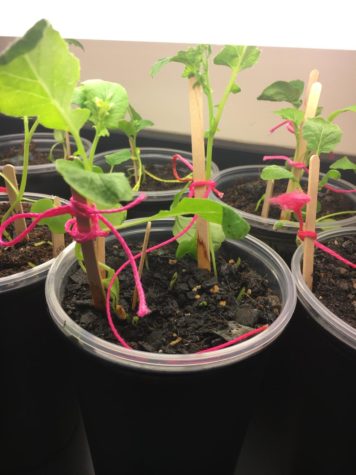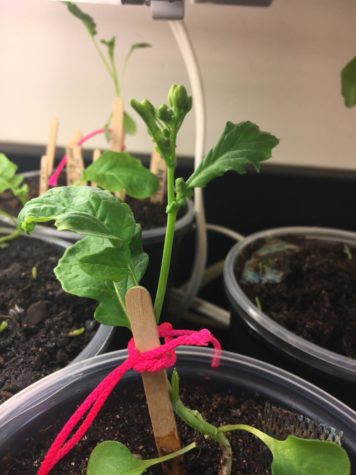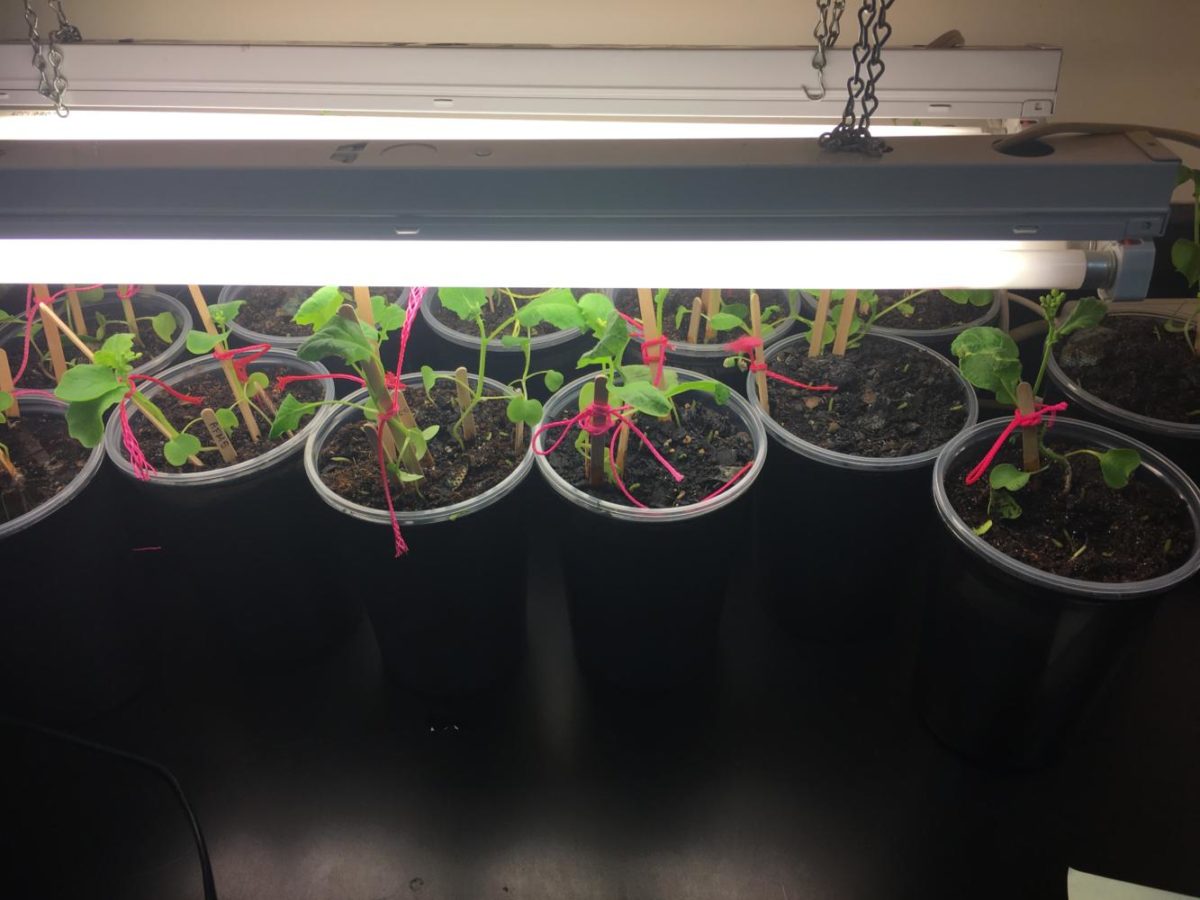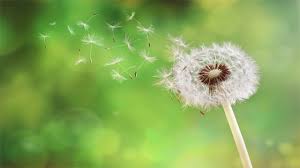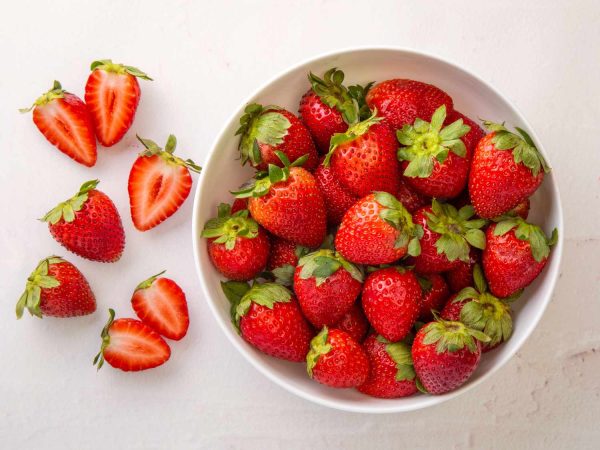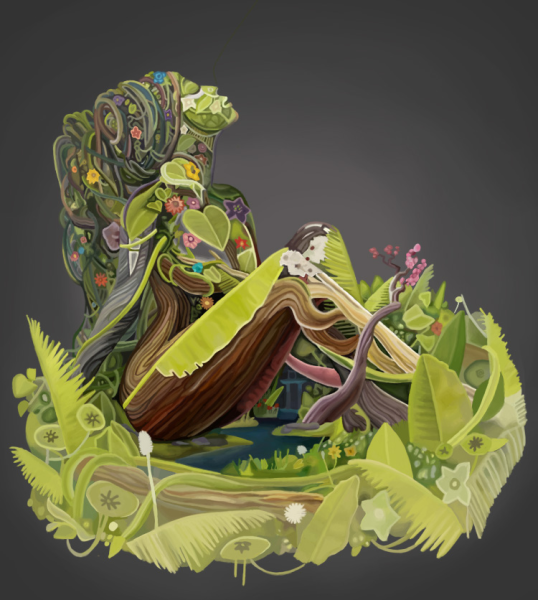The AP Bio Artificial Selection Lab
September 29, 2017
The AP Biology students in Ms. Marcums class have been breeding plants with certain traits to see if their offspring will have these traits. This process is called artificial selection, breeding organisms together so that their offspring will have the trait. Artificial is done mostly by humans and this is a common thing done in dog breeding, take labradoodle es for example. Labradoodles are a mix of a lab and a poodle, labs are great water dogs and poodles are very family friendly, mixed together you have a dog that is good for families and loves the water.
Students planted twelve Wisconsin Fast Plant seeds a week or so ago. Wisconsin Fast Plants from the University of Wisconsin were designed to grow, flower, and reproduce in just a few weeks . In just a few days the students had plants growing up to 10 centimeters high! Everyday students made observations on their plants.The characteristic students decided to select for plants want more trichomes because it couldn’t be affected by age or environment, it was strictly genetic. Trichomes are little tiny hairs on the plant to help keep insects off so they wouldn’t lay eggs on the plant.
The students used a magnifying glass to count all the trichomes on the first true leaf of the plant, only on the petiole. The true leaves of the plant are shaped like real leaves, wrinkly, and have the veins. The petiole is the stem of the true leaf that connects to the main stem. Students counted the number of trichomes on the first petiole of a true leaf on all twelve plants and entered them into a database. They used wooden skewers to identify each plant. The students then took the top 15% with the most trichomes and saved those plants for breeding.
They hypothesized that if they breed together plants with a lot of trichomes, the offspring should have more trichomes as well. They will breed the plants together and count the number of trichomes on the petiole of the first true leaf of the offspring. If they find a significant difference in the number of trichomes, their hypothesis will be correct. If they do not find a significant difference, they will reject the hypothesis. Ms. Marcum and her students are hoping for more trichomes!!
